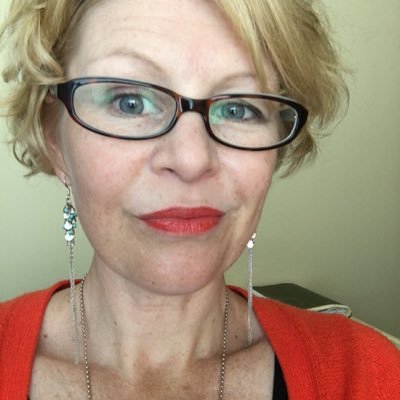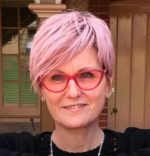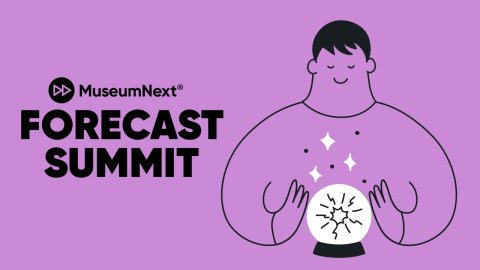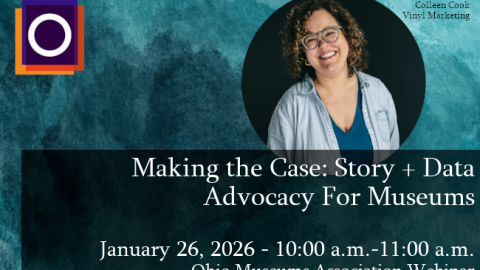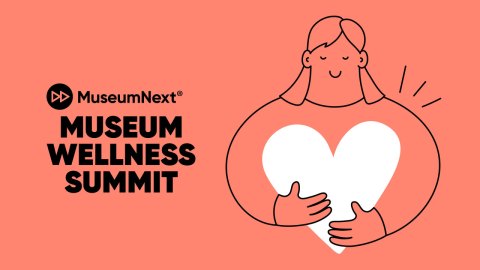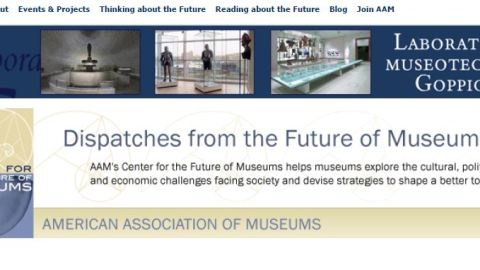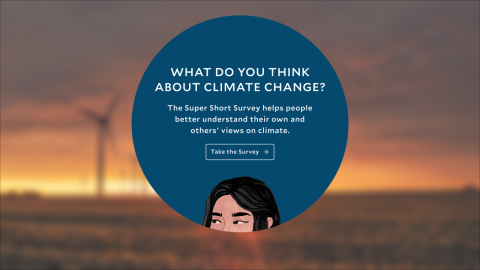The end of Pride Month does not mean that we should stop talking or thinking about LGBTQIA+ inclusion and queer curating practices in museums. This month, we’re joined by Craig Middleton and Nikki Sullivan, authors of the KINQ (or Knowledge Industries Need Queering)manifesto, and Alison Kennedy and Anna Woten, from AAM’s LGBTQ Alliance Task Force for Transgender Inclusion to discuss queering the museum.
Never miss an episode! Subscribe to Museopunks on iTunes or Stitcher
Guests
Craig Middleton is the Manager of the Centre of Democracy in Adelaide, South Australia. His research and practice explores political histories and histories of activism, LGBTIQ+ histories, and critical museology. In 2018 he was awarded a George Alexander Foundation Fellowship to investigate how American museums explore political history and activism through exhibitions, programs, and education. @_museumguy
Nikki Sullivan is Curator of the Migration Museum in Adelaide, South Australia. She is also Honorary Associate Professor of Critical and Cultural Studies in the Department of Media, Music, Communication and Cultural Studies at Macquarie University. Nikki has a long held interest in sexuality and body modification and has published widely on both. Her book ‘ A Critical Introduction to Queer Theory’ was published by NYU press in 2003. @NikkiSu92993809
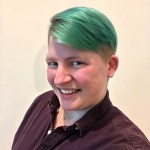 Alison Kennedy creates exceptional visitor experiences in multiple museums in Columbus, Ohio. They work to create inclusive museums both locally and nationally through their position on the advisory board of the Gay Ohio History Initiative and as the co-chair of the American Alliance of Museums’ LGBTQ Alliance’s Task Force For Transgender Inclusion. Follow them on Twitter and Instagram as @museumqueer. @museumqueer
Alison Kennedy creates exceptional visitor experiences in multiple museums in Columbus, Ohio. They work to create inclusive museums both locally and nationally through their position on the advisory board of the Gay Ohio History Initiative and as the co-chair of the American Alliance of Museums’ LGBTQ Alliance’s Task Force For Transgender Inclusion. Follow them on Twitter and Instagram as @museumqueer. @museumqueer
Anna Woten is the Assistant Collections Manager for the Atlanta History Center, where she helps to manage the institution’s 57,000 objects spread across its multiple campuses, manages incoming loans for exhibition purposes, and works with exhibition teams to develop exhibit content. Anna also works both nationally and internationally towards LGBTQIA+ inclusion in museums as Chairperson of the American Alliance of Museums’ LGBTQ Alliance Professional Network. @AnnaWoten
Show Notes
The KINQ Manifesto – Craig Middleton and Nikki Sullivan
Queering Needs to be Anti-Colonial
A Critical Introduction to Queer Theory
The National Center for Transgender Equality
Presenting Sponsor
Museopunks is presented by the American Alliance of Museums.
Graphic Design of the Museopunks logo is by Selena Robleto.
Website: Museopunks.org
Twitter: @museopunks
Transcript
Suse Anderson: Good day and welcome to Museopunks, the podcast for the progressive museum. My name is Suse Anderson, and I’ll be your host today as we explore yet another aspect of progressive museum practice.
At the end of June, I noticed a tweet from scamjanette, or @__anjanett, that shared photos and text from the Stonewall 50 display at Minnesota Historical Society. One of the photos was of a text panel in an empty case. The panel, whose text was written by B. Aaron Cole, was titled, “Missing Stories, Future Stories.” And this is what it said, “Why is this case empty? Because museums and archives have long erased queer people from historical narratives and failed to collect objects from queer communities. Our stories were too controversial, or worse, too irrelevant to the stories museums like to tell through their exhibits and collections. Think of what objects could be in this case if queer Minnesotans trusted MNHS more with our stories. But this empty case also symbolizes the future. What stories and artifacts could MNHS be collecting from queer Minnesotans now? What stories and artifacts do you have that could help document queer history?”
Today we’re gonna have two conversations about queering museums, one focused on the KINQ or Knowledge Industries Need Queering manifesto, which also talks a bit about queer curatorship, and one looking at the recently released toolkit on trans inclusion from AAM’s LGBTQ Alliance Task Force for Transgender Inclusion.
A quick note before we start. These interviews were recorded at around, oh, toddler bed time, Baltimore time. And thekiddo was not playing nicely with the kind of environment that you might want for recording. So, in at least one of these segments, there is a little screaming in the background. Hopefully it won’t be too much for distraction.
Craig Middleton is the manager of the Center of Democracy in Adelaide, South Australia. His research and practice explores political histories and histories of activism, LGBTIQ+ histories, and critical museology. In 2018, he was awarded a George Alexander Foundation fellowship to investigate how American museums explore political history and activism through exhibitions, programs, and education.
Nikki Sullivan is curator of the Migration Museum in Adelaide, South Australia. She’s also Honorary Associate Professor of Critical and Cultural Studies in the department of Media, Music, Communication, and Cultural Studies at Macquarie University. Nikki has a long-held interest in sexuality and body modification and has published widely on both. Her book A Critical Introduction to Queer Theory was published by NYU press in 2003. Together Craig and Nikki are publishing a book in late 2019 called Queering The Museum. Craig, Nikki, welcome to Museopunks.
Craig Middleton: Hi, thanks for having us.
Nikki Sullivan: Hello.
Suse: It is so awesome to have you here. So earlier this year, you published the KINQ, or Knowledge Industries Need Queering manifesto. To kick us off, can you introduce us to the manifesto? How did it come about? Why did it come about? Why is there a manifesto about need for queering knowledge industries?
Craig: Great, yes, so yeah, thanks for having us. And I guess the KINQ manifesto really started because Nikki and I were doing a lot of research. A lot of research around different museological practices around queering. And we were trying to find ways to sort of disseminate that research. And there was a conference, the Australian Museums and Galleries Association Conference, which happened in Melbourne in 2018. And the theme was agents of change. And that really excited us for lots of reasons, for silly reasons, for exciting reasons. And we started thinking about ways we could share the research we were doing while embodying being agents and doing something that was a bit more performative.
Nikki: It was a good excuse to get dressed up.
Craig: It was, and actually that was one of our starting points was that we wanted to dress as agents. And so we actually came up with the names for these agents. Maxwell the Saint Steed-Powers, which was Nikki’s alter ego, and Foxxy 99 Peel, which was my alter ego. And, we were writing this conference paper and we were sort of getting… There was a lot of ideas going around. We were getting challenged by how we could do this in a really fun and engaging way. And then we came up with the idea of a manifesto for lots of reasons. Because manifestos are documents that share ideals, that share principles that sort of challenge or critique what might not seem to whoever writes it as the right and proper way. And so, we liked that sort of format. And it also made it accessible. It helped us identify particular points we wanted to share. And we could dress up as agents and sort of, yeah, share that.
Suse: The manifesto argues that heteronormativity has too long had the world in its grips and it associates heteronormativity with a set of well-trodden paths leading to tacitly agreed objects and outcomes. Nikki, I know you’ve done an introduction to queer theory. You have written a book on queer theory. Can you define heteronormativity for us and explain how it creates kind of normative values and expectations?
Nikki: I think I can do that. Although I have to say that other people have probably done it much more eloquently than I’m gonna do it now. But for me heteronormativity is a system that underpins our thinking and the way that we do things. And it presumes at its heart that heterosexuality is the norm and that what we think of as gender normativity is the norm. So, there’s an assumption that there’s two kinds of people in the world, they’re biologically determined, it’s natural for them to get together and to do certain things like procreate. And in many ways, our world is structured around those assumptions.
Most often we’re unaware of that. Particularly if those assumptions don’t work against us. But I guess for those of us for whom that narrative or that way of thinking doesn’t sit well with our sense of self or with the way we want to live our lives, then you see how problematic it is. And so queering heteronormativity is about trying to bring to light all of those things, those ideas, those ways of doing things that are so naturalized that they’ve become invisible to us. I mean, I could give lots of examples. But the most obvious one, I think, is the idea that the world is made up of two kinds of people, men and women. And when I used to teach queer theory, I’d often begin with that premise. Well, you know, there’s this idea that the world is made up of two kinds of people, men and women. And most often my students at the beginning of the course would say, yeah, well, that’s a no brainer. Of course, that’s a fact, that’s indisputable. And by the end of the course, they weren’t so convinced that that was an indisputable fact.
Suse: Yeah, I think one of the things that I think is so interesting about the manifesto overall is you state that museums are complicit in the heteronormative disciplining of sex and constructing frameworks of sexual normalcy and also that museums have operated as institutions that help define sexual deviancy. And these ideas are clearly linked to what you’re talking about, that if we start from a notion that there is a gender binary, then once you move from that notion, we start getting ideas about normalcy and deviancy and who is and is not appropriate within these frameworks. So can you talk a little bit about how museums and in fact, society more broadly constructs these kind of frameworks of normalcy and what the implications are of such frameworks?
Nikki: Yeah, I think there’s lots of examples that you could take. I mean, I think if you walked into your local museum, whatever kind of museum it might be, and you put on these sorts of critical glasses, you would start to see the sort of unspoken assumptions that inform the displays. So, for me the most obvious example is the natural history museum. If you look at the displays of animals, the stuffed animals, almost always in pairs. There’s almost always a male lion and a female lion. And sometimes there are offsprings. And absolutely without, I think, without thinking what we’re doing, we reconfigure these ways of being constantly in and through our representational processes.
And then little kids come in to see the stuffed animals and what do they see? The same old story of family, of heterosexuality, of this is even how animals live. And none of that is made explicit, but it’s all there. I think that a lot of the stories that are told in social history museums might not seem to be explicitly promoting a particular idea of what it is to be a woman or what it is to be a man, but they’re certainly not giving you ways of thinking about being that are not gendered. And they’re certainly not giving you ways of thinking about relationships that are not heterosexual. So I think often it’s the absence of alternatives that reaffirms a narrow notion of what it is to be in the world.
Craig: And that sort of supports the idea that the museums, a museum’s role is about world making. We sort of learn by what we see. And if museums, which are highly trusted institutions, continue to do that, is that a good thing or not?
Suse: Yeah, one of the things that I think is so interesting, even in the way you’re framing this now, is you are talking about all museums, that it’s not just certain types of museums. It’s not just history museums or art museums, that it is science and all of the different museums as well. Your second claim in the manifesto is in fact that all museums are sex museums. And I think this is probably getting to some of those same issues. Can you tell me more about that claim and how these ideas really are pervasive throughout the sector?
Nikki: Yeah, I have to say at the outset, this claim is not ours. It was made by Jennifer Tyburczy in a fantastic book called Sex Museums. And we were just so convinced by it from the minute that we read it. What I really loved about the claim and what I still love about the claim is that she says, look, sex isn’t just about two bodies coming together. Sex is about the ways in which the relationships between bodies, things, and contexts are regulated, I suppose. And when you look at the ways that museums regulate bodies, it’s quite fascinating.
So, I recently saw a picture of the Love Museum, which I think is in Seoul. And when you walk in the door there, there are these two figures that you can stand in and get your photograph taken. And the figures are like the sort of stick figures that you see on toilet doors. One that we take to be male and one that we take to be female. And then there’s a sign that says all the things you can do in the Love Museum is you can take photos, you can do this, that, and the other, but you can’t have sex. And just the idea that you can’t have sex in a museum, I mean, it sounds like… In some ways, it sounds like, well, of course you can’t have sex in museums. But why, why is that the case? Why is it that this space is constructed such that some things are appropriate and other things are not?
I think sometimes we take those things so much for granted that we don’t ask those questions. And I suppose we want to start to ask those questions. What does it mean to actually foreground the fact that there are certain ideas being promoted here about proper relationships between bodies, objects, and spaces? So, you might have in a tableau, you might have a woman in a kitchen with, I don’t know, making tea with a tea pot and tea set. And that’s a proper relation. But why? I mean, what does promoting that proper relationship do and what does the absence of other kinds of relationships between particular bodies, say, and teapots have? What are the sort of world making implications of that are the kinds of questions we want to ask.
Suse: So let’s then get into the concept of queer curatorship, which you talk about and you introduce in the manifesto. Craig, can you tell me a little bit more about what queer curatorship looks like and what it has as its aims? I mean, I think you’re already talking about the relationships that we create between bodies and space and why some are and aren’t allowed. Is that what’s getting to the heart of queer curatorship?
Craig: So queer curatorship, I guess, it’s something that’s sort of a critical practice. It’s not something that can or should necessarily be defined as one way of doing something. So, Nikki was just talking about particular configurations and, I guess, assumed normal and natural configurations that we might find in museums, because museums is the context in which we work.
Queer curatorship would think about approaching configurations in non-normative ways. And that includes highlighting absence. So, Nikki was just talking about the absence of particular ways of being, knowing, seeing, and doing in museums and I guess this is from an objects perspective. You can juxtapose objects to create alternative meanings. And an example is a few years ago in 2016, Nikki and I worked with 10 LGBTQ identified Adelaidians to literally queer the museums. So, we worked with them to research the History Trust of South Australia’s collections and they found objects that spoke to their experience of gender or sexuality. And one particular participant, Richard Boyle, he found a 1950s wedding dress that was lavender in color, it was lilac, lavender. And he also through his search of the textiles collections found a beard that belonged to a child’s costume. And so those two things to many people don’t make sense together, but to Richard they did make sense. And when we put them on the mannequin together, Richard was able to share the story of what’s termed a lavender marriage, which is when a gay man marries a woman, a potentially heterosexual woman, potentially a non-heterosexual woman, to conceal his homosexuality. And that’s termed as a lavender marriage. And the woman in that relationship is called a beard. So, by doing that juxtaposition and by reconfiguring objects in a display like that, that’s one example of how you can approach queer curatorship.
Suse: It’s a really beautiful image and a really powerful story. Does queering a museum help us understand objects and stories that we think we know well differently? Does it actually help us broaden the understanding that we have of our museums, of our collections, and really of the world in which we’ve all been living but maybe not necessarily with the same levels of visibility?
Craig: Yeah, definitely. I think one of the challenges we face as queer identified curators is that a lot of people will say that there are no LGBTIQ objects in our collection because they’re not evidently so. But we might ask, what is a queer object? What makes it queer? Why are all the objects heterosexual? Why is a teapot heterosexual? We might ask those questions. And queer curatorship and queering the museum is about opening up the museum, the collections, the practices, the processes, up to different ways of working or alternative ways of working. It’s not necessarily about replacing old narratives with new ones. It definitely is about broadening that worldview.
And through examples like the one I’ve just given, we can include and highlight LGBTIQ lives in ways that you couldn’t if you just focused on an object’s provenance or significance as it was documented at the time of its collection. And we in our work do critique provenance and significance because it does limit the interpretation. It limits the possibilities and it limits how we can approach curatorship.
Nikki: I think a good example of that is we’ve currently got an exhibition in our forum gallery, which is our community history gallery, where we work with community groups to put on exhibitions and we’ve worked with a group of LGBT elders who are telling their stories in there. And we’ve used an object from our collection. We have a collection of objects that came from a psychiatric hospital in Adelaide, and that collection includes ECT machines.
Now, the provenance of them doesn’t say anything about the fact that these machines or ECT machines in general were ever used in the process of trying to cure homosexuality. But one of the stories that we’re telling in that exhibition is about a woman who was in one of these psychiatric institutions in Adelaide and underwent a whole range of different kinds of sort of cure therapies, including ECT. And so, we’ve put the ECT machine in there with a label that tells a story about the history of attempts to cure homosexuality and the ECT was one of those sort of mechanisms, if you like.
So, it is, like Craig said, it’s taking the object away from this idea that provenance is the only thing that matters or that there’s a singular interpretation. What queer curatorship tries to do is to say, actually, every object is open to multiple interpretations. And there is no reason for us to have a hierarchy of interpretations. When we say, you know, when we use the ECT machine, we’re not saying this very ECT machine was used to carry out these processes. We’re talking about ECT machines in general. So, I think it’s a different approach to objects than the one that is tied to provenance and significance.
Craig: It’s using the objects as a vehicle for exploring ideas, perhaps is a nice way to say it.
Suse: Yeah, I think that is a really nice way to say it. In your notes about the background of the manifesto that is published online, and I’ll share a link to that in the show notes, you’re careful to differentiate between inclusion practices within the museum and queering the museum. How do these two practices serve in parallel to each other and how do they create difference in the approach that you’re talking about?
Nikki: Well, Craig and I have just finished writing a book called Queering the Museum, which gives you the big version of this. But the short answer is that whilst we’re not opposed to inclusion as sort of a policy driven practice, we see that it has its merits, for us there are lots of issues insofar as inclusion necessarily presupposes exclusion. You can’t have inclusion without somebody being excluded. And so, what ends up happening is that when people take an inclusion approach, what gets included is the most palatable of the excluded group, if you know what I mean. So, one of the things that we say in the manifesto is that it isn’t that there’s no LGBTIQ presence anymore in museums, there is some. But what is there is often the most mainstream version of LGBTIQ lives, if you like. And so, we’re wanting to trouble that and to say… We’re also wanting to trouble the idea that being queer identified is something that you can put in a box and say, well yes, there are five lesbians in this institution and we can count them.
We’re more interested in processes of differentiation than we are in kind of identity in that more fixed sense. So, we’re trying to say, okay, look, inclusion policy and practice has its place and it is important. But if that’s all we ever do, then we will continue to exclude and what we will exclude is always going to be at the margins. And so, you don’t change the logic, basically. You just let more people in to the party.
Suse: So it’s interesting hearing you say that. One of the things that I’ve been thinking about a lot in my teaching and as I think about museums now as an academic is I think a lot about naming and the power of naming and the power of categorization and how so many of the issues that museums have sort of created and created for themselves but also created for broader publics have come from the decision to categorize someone, to paint them as other, to really name someone or something as one thing and not another, and this gets to your point about exclusion and inclusion actually themselves being binary concepts. I think one of the things, I guess, I’ve been wondering about as I’ve been thinking about the KINQ manifesto is the importance of self-naming and self-identifying and agency to self-define rather than being defined as other. Is that a concept that makes sense? And it seems like a really big challenge for museums, if so, because so much of what museums have done has been about naming.
Nikki: Yeah, I think one of the issues for us here is the idea that we don’t want to speak as practitioners on behalf of other people. We don’t want to talk about lesbians or about bisexual people. We want to participate in co-creation. And, the sort of second point there is that we want to recognize intersectionality. So, Craig might say something about it.
Craig: Yeah, so when you do explore the KINQ manifesto, we’ve got one response to it so far by Nathan Sentence, who is a museum and archives professional in Sydney and identifies as Aboriginal. And so I think his approach, his response to the KINQ manifesto not just as a queer identified person but in the context of his race identity as well. And so, I guess thinking about intersectionality, when we taxonomize, and we might just taxonomize people based on their sexuality. So, me being a gay man. If that’s the only thing that’s taxonomized about me within a museum context, then it’s not taking into account all these other complex and potentially contradictory elements of my identity, and so I guess that’s what the approach to queering the museum is about as well. It’s about acknowledging that we’re as individuals and people, our lives are really complex and they’re influenced and affected in many different ways.
Nikki: And it’s not possible for us or for anybody to sort of name that complexity in another. Which is why I guess the sort of self-directed work that you’re kind of gesturing towards here is really important.
Suse: I’m really happy that you mentioned Nathan’s response to the manifesto. You’re explicit that the manifesto is open to critique, to change, to iteration. You say we’ll hopefully work towards and embody queerness, whatever that might mean. Why is it important that this exists as a living document rather than as a marker of a moment in time?
Craig: I think yeah, thank you for bringing that up. I think one of the, while at the beginning I talked about how we were interested in using the manifesto model to promote these sorts of ideals and these ideas. Actually, to us manifesto’s also problematic in that they often set out a guide that is unchanging. This is the way you achieve a utopian society. And so, we really wanted to queer the manifesto in a sense and make it iterative and potentially contradictory and open to challenge and open to conversation. And that’s important because what we are articulating in this manifesto is a queer critical approach. And if the manifesto itself didn’t embody that, then it’s kind of, it’s not ideal, basically.
Suse: You first published the manifesto online on the Bent Street website, which is a journal of Australia LGBTIQA+ writing. Why did you decide that was the right venue for its first publication?
Nikki: Well, basically we had already published in that journal once before, and the person who edits it had asked us whether we had anything that we’d been doing recently and it was the most recent piece of work that we’d done. We really value that journal. It’s really heterogeneous in terms of what it does. So, it showcases the work of people who come from a whole range of different backgrounds and who communicate in a whole range of different ways. And so, to us it seemed like much more applicable or a much more appropriate place to put it than somewhere like an academic journal.
Suse: Great. So, I am a cisgender, heterosexual, white woman. What do you wish I understood about queering the museum and how can I best support this work?
Nikki: Well, I wish that, you know, for me the ideal thing would be if you recognized yourself as somebody who potentially has as much to contribute to it as anybody else. We absolutely don’t want it to be an exclusive club and we actually are really opposed to the idea that there are a hierarchy of positions from which you can respond.
What we want is for queering to be something that we all do. And if, you know, in an ideal world, it would become redundant because the world would become queer in a sense. But because we don’t live in an ideal world and because that kind of utopia is never attainable, then queering will be an ongoing process that we hope people will contribute to and that we hope that the people who contribute to it will be as open to learning and to listening as they are to speaking and sharing.
Craig: And I think queering is just one approach to museum practice and to research. And it should and can be used alongside other approaches, which can actually make its goal stronger because you’re reinforcing that highlighting of diverse lives and stories and people.
Suse: Yeah, I absolutely love that response and that approach. As someone who consistently seeks to be experimental and questioning within my own practice, it’s so important to have, I think, other mechanisms and frameworks and methodologies to draw upon within that work and other frames of thinking.
Now, if people want to find out more about the work that you’re both doing, if they want to find out more about the manifesto or even contribute to this changing document, to this manifesto of change and iteration, what’s the best way for them to do so?
Craig: Well, I reckon head to the website, kinqblog.wordpress.com. Our details are on there. But you can also connect with us via Twitter and social media. And I’m sure we can get those details to you to share. But just start the conversation and you don’t necessarily have to have a fully formed idea for a response or for a project you’re thinking about. We’re always happy to chat those things through and we think that’s a really important practice as well.
Suse: Craig and Nikki, thank you so, so much for joining me on Museopunks. I can’t wait to see how this project continues to evolve.
Craig: Thank you so much, it’s been fun.
Nikki: Yes, thanks for having us and thank you for helping us spread the word.
Suse: Absolutely.
Alison Kennedy creates exceptional visitor experiences in multiple museums in Columbus, Ohio. They work to create inclusive museums both locally and nationally through their position on the advisory board of the Gay Ohio History Initiative and as the co-chair of the American Alliance of Museums LGBTQ Alliance’s Task Force for Transgender Inclusion. Follow them on Twitter and Instagram as @museumqueer.
Anna Woten is the Assistant Collections Manager for the Atlanta History Center, where she helps manage the institution’s 57,000 objects spread across its multiple campuses, manages incoming loans for exhibition purposes, and works with exhibition teams to develop exhibit content. Anna also works both nationally and internationally towards LGBTQIA+ inclusion in museums as Chairperson of the American Alliance of Museums’ LGBTQ Alliance Professional Network. Alison, Anna, welcome to Museopunks.
Alison Kennedy: Thank you for having us.
Anna Woten: Thanks for having us.
Suse: I’m so glad you’re here, yeah, it’s great. Earlier this year, the LGBTQ Alliance Task Force for Transgender Inclusion launched the “Gender Transition and Transgender Inclusion in the Museum Workplace,” a toolkit for trans individuals, institutions, and coworkers. I really want to talk about the toolkit today, about what it is, where it came from, and some of the nuances that we can unpack from it. But before we get into all of that, I’d really like to get some basic definitions into this conversation early. Alison, could you introduce us to the terms transitioning and transgender?
Alison: Absolutely, so the term transgender applies to anyone whose gender they were assigned at birth does not match the gender that they are. There are no other kind of qualifiers that go with it necessarily. Literally it’s just the gender that you were assigned does not match the one that you are.
Transitioning is the process of kind of reconciling those two things together in whatever way that means to you. So, there’s lots of different aspects to transitioning that are very personal and individual and there’s no right or wrong way to do that. Some people transition medically with hormones or surgeries. There’s also social transition. So, changing a name, changing the way you’re dressing and presenting yourself. But there’s no right or wrong way kind of to go about it and it’s all very personal and individual.
Suse: Early on in the toolkits, you actually spend some time talking about this, about the fact that there is no one way to transition and that the toolkits that you’ve created are really going to be a starting place and a guide but that every circumstance is different and every person’s experience is different.
So, can you introduce the toolkits, what they are, and where they came from? Anna, maybe you can talk us through that.
Anna: Yeah, so we have there are three different guides within the toolkit, and they’re each focused on a specific audience. We found with a lot of the resources that existed, there was just kind of general focus. These are the general things you might have to watch out for and it was kind of nebulous a lot of the times, and people who didn’t have experience with trans issues often found that hard to follow. So, we really wanted to create something that was very accessible for everybody no matter where they were coming from. So out of that, we created three guides.
The first guide is for the transitioning professional. And this one is tailored specifically to look at sample transition plans, how you might go about doing it. It has sample conversations and emails, how you might approach your supervisor or HR, how you might talk to your coworkers. And a couple other resources that are specifically helpful for the transitioning professional but might bog down the process if everybody else tried to worry about them as well.
The second guide is for the institution. And it takes a look at the responsibilities of HR and management in the institution as a whole and what their part in the process is. And again, this has kind of sample ways to go about it. It also looks at creating transition plans for the specific individuals. And it also looks at how to create institutional transition guidelines. And these are big overarching plans of how the institution needs to handle transitions in the future, who’s responsible for it, the process it goes through, what is and is not expected of both management and of the transitioning employee.
And then the third guide is specifically for the coworker. And this was written from a position of assuming not much knowledge about trans issues. It looks at basic definitions. It has charts of language and sample things to say. It looks at frequently asked questions. And it tries to build basic knowledge about being an ally from a zero-point starting.
Suse: This is great. So, I have read all three guides and I found them incredibly helpful, and I think we’re going to unpack a little bit from each of them today. So, the first one that you talked about is what happens if you’re actually coming out as trans at work, a process that I’m sure can be overwhelming or uncomfortable.
So, you just mentioned the plan, thinking about a workplace transition plan. Can you talk a little bit about what the steps are that someone might want to consider when designing their workplace transition plan?
Anna: Yeah, absolutely. So, as you mentioned, transitioning is a very stressful situation, and part of what spurred this toolkit into existence is that without any sort of guidance, your standard museum professional is not an HR professional, so they have no idea what to do.
My institution was great when I transitioned, but I was the first person to openly transition there, so there were multiple meetings where I was sitting with HR and we were asking each other back and forth well, what’s next? So that’s something that we approach in the professionals guide and the institutional guide.
But the plans look at how you might go about notifying people, whether it’s HR first or management first, depending on the size of your institution. Not all institutions have HR offices. So, it’s looking at that. Creating a manager position who’s kind of a sponsor who’s going to be the point of contact for the general staff so that all of the questions aren’t bombarding the transitioning professional who’s already going through so much stress in this process.
And then it also looks at how the institution goes about notifying the rest of the staff and then also any outside partnerships that they might have, if those people need to be contacted, and it looks at any sort of HR changes, paperwork that needs to be changed, when it can be changed, that sort of thing.
Suse: One of the case studies that I thought was really interesting and really helpful in the “Inclusion Guide for Trans Individuals,” was talking through a number of different case studies of different ways that the announcement was made to fellow staff and colleagues about the transitioning individual’s transition. And it mentioned at one large museum that the museum had brought in a trans health professional from a local community clinic to run a short trans 101 in the workplace training and Q&A session.
I’m sure there are lots of institutions that could benefit from this kind of training for staff. And you were just talking about your own experiences and how many questions there were during the process. What are some effective ways to facilitate this kind of conversation, this kind of training? Is it best to always go to someone outside within the local community?
Anna: Yeah, I think it’s important to, and it’s important to always have a trans person being the one who is facilitating it. Because even within the broader LGBQIA community, there’s a lot of misinformation and misunderstanding about the trans community. That’s part of why this task force was created. And it’s always good to bring somebody in if you can help. At my institution, I’m the person that that responsibility falls on. I’ve done a couple different trainings for our staff and it can be draining. It’s definitely leaning, it can sometimes lead towards tokenization of trans people and it can get exhausting.
Suse: Yeah, Alison.
Alison: That’s definitely what I was going to say. You want to make sure that the burden of that kind of inclusion work doesn’t fall onto someone who that’s not their job. There are a lot of really amazing professionals who it is their job to run these kinds of trainings and to do this kind of work. So, if we can support those folks while also giving the person in your institution a break, a lot of the time I’ve kind of opted into being that person who does a lot of the training and I don’t mind because I have opted into it.
But it’s not necessarily something that everyone opts into, even individual questions from coworkers they’re friends with. So, making sure. And yeah, making sure that that burden doesn’t always fall on the transitioning professional is really important.
Suse: Yeah, speaking of training, another kind of training that’s important that you mention in the guides is training for front line staff who might be dealing with transphobic behaviors such as disrespectful language or misgendering and disruptive behaviors. Are there strategies that museum professionals can adopt that they can use to support trans individuals within their institution who may be dealing directly with museum visitors or with the public in some way?
Alison: Absolutely, I think first of all, always check in with any trans staff about how they want things dealt with, with visitors. I personally don’t mind getting misgendered by visitors because they’re not people who I’m going to talk to that deeply about those topics. My coworkers, on the other hand, I care much more about them, so I don’t want my coworkers correcting every visitor who misgenders me, because that’s a lot of conversation we don’t need to be having. So, I think checking in at that base level of how do you want me to support you in these situations is really important.
I think as an institution, the most important thing you can do if you’re going to roll out any kind of trans inclusion policy or name tags with pronouns on them, anything like that, is to make sure that you have really consistent institutional language around why and explaining that decision and then make sure that every single staff person has that information and can effectively communicate it to each other and to visitors.
Because people might ask, and you want to make sure that anyone who is asked can answer the question.
Suse: Right, I’m sure that there’s… You know, language is empowering. And so being able to have the correct language and terminology I’m sure is helpful for everyone across the institution.
Alison: Absolutely.
Suse: In the guide for coworkers, you also talk about the importance of prioritizing your coworker’s rights over the non-trans professional, the non-trans individual’s needs, including, I’m misphrasing, this is not what you said specifically, but including thinking about ego needs and levels of discomfort and those sorts of things. What are the best ways of consistently centering the needs of a trans colleague and helping make sure that actually you are checking in appropriately and making sure that they are feeling welcomed but also not tokenized? Anna, maybe you can start us with that.
Anna: Educating yourself goes a long ways. As I said, it can be exhausting to be asked questions continuously, so using the toolkit is a starting point. And then looking at a lot of the other resources that we have listed in the toolkit as well to help self-educate yourself.
Yeah, and as far as discomfort, whether it’s discomfort giving your own pronouns in a situation or with using the bathroom, that discomfort falls on you. It’s not the trans person’s fault. So that’s something you have to work on kind of yourself. If you’re uncomfortable in a situation, you can always remove yourself from it. But just because you’re uncomfortable doesn’t mean that somebody else has to suffer because of it.
Suse: Yeah, I think that’s a really important message and important framing for all of us to learn or certainly it’s something I think about a lot is what am I doing in a particular circumstance and how is it my responsibility to take care of myself and my own actions and responses rather than assuming that on someone else? We’ve been speaking a little bit about supporting trans colleagues, but how can museum professionals across the museum then further support the trans community?
Anna: Creating safe spaces, spaces where trans people feel like they belong. As I mentioned earlier, even within the broader LGBTQIA community, trans people are often excluded and historically have been excluded.
Some of the worst transphobia I’ve seen has come out of the lesbian community, which I say as a member of that community. So just because you say that your space is an LGBTQIA space, trans people may assume, well, the T is silent is this thing that usually goes with that. So specifically making sure that everybody feels welcome. And a really great way to approach that, if you’re looking at programming or education or exhibit content is to actually talk to the trans community. You should be doing that with any community that you represent within those spaces. But yeah, really going out, specifically talking to the trans community, inviting them to come in for focus groups or advisory groups. When you put together focus and advisory groups for your content creation and education and programming, all of the people should not look the same. You need to make sure to always be diversifying and it takes the effort of actually going out into the community to build those relationships.
Suse: Yeah, one of the sections I found really helpful in the guide is the section on gender inclusive language. Alison, maybe you can talk a little bit more about gender inclusive language and how it can apply within our institutional spaces and how it can help make welcoming spaces.
Alison: Absolutely, so language is something that we use every day and the way we use it is really ingrained based on how we were raised and how we were educated. That does mean sometimes that we have to undo a lot of things. My gender pronouns are they/them/theirs, and I get a lot of pushback from folks about, well, it’s not grammatically correct. It is, but even if it wasn’t, that’s not a reason to invalidate me as a person.
So, I think as an institution, there’s lots of things that we can do to think about how we can be more inclusive with our language. Some of that may mean changing copy to say they instead of the really clunky he or she, he/she. Additionally, both as an institution and on your own, thinking about the way that you’re addressing people and addressing groups specifically, it can be really difficult not to say, hey guys, or hey ladies. But it is really important to think about who you’re including in those groups. You may say hey guys to a group of people whose genders you don’t necessarily know who all have different genders. But you wouldn’t necessarily say ladies to your group of men. And so it’s not really gender neutral, right? So, thinking about, hi friends or hello everyone, folks. There are lots of gender inclusive words you can use. And so, it’s really important to practice those things and I wrote recently about being kind of silly with it sometimes. I was training a group of summer camp counselors, and I said, you can say hello campers or good morning astronauts or whatever it might be. Because those words are gender inclusive. So, I think just being really deliberate and thoughtful with your language.
If someone tells you, hey, that word doesn’t feel good for me, whatever it might be, no matter what you know or think you know about them, you have to respect that. That’s just a matter of respect as a person. And this goes for pronouns, names, words they’re being referred to. I really can’t stand being called lady. That’s not one that really works for me. So I always appreciate it if I tell people that I don’t like that that if they respect that.
Suse: Yeah, I’ve been thinking a lot over the last couple of years of how I address groups in particular. At the moment, I’m settled on hey, team. But I’ll see whether that is the one that stays. It works pretty well in the classroom. I think because it means we’re all on the same team, which is the team to learning. I’m such a sap.
At the end of the guide, you list 17 contributors and participants who helped create the guide as well as acknowledging that there are 11 members who are stealth or who choose not to be listed by name for personal or safety reasons. I want to recognize how brave it is to participate in work where you don’t feel protected. But I also wonder what it costs us as a sector if our own staff don’t feel safe at work to open up about who they are. Anna, can you talk about the implications of this for us as a sector?
Anna: Well, it comes down a lot to the lack of visibility and to the lack of familiarity with the trans community and with trans people in general. And that leads to a lot of the demonization of trans people being other, them being weird, or the stereotypes that we see within media.
I didn’t see a character within media that actually represented who I was who I could actually relate to until I was 28 years old. So that kind of tells you a lot about the really poor representation within media. And there was a survey a couple years ago, I think we quoted it in the toolkit, that 16% of Americans report that they personally know a trans person. And if you look at people 45 and older, that goes down to 9%, which is a really shocking number because older estimates place the trans population at 0.6% to 1% of the US population. More recent studies that have come out this year from the CDC put that number closer to 2% of the US population being trans, which doesn’t sound like a lot. But to put that into context, 1% of the US population are natural redheads. And I’m guessing that there’s not many people listening that could say that they don’t know at least one natural redhead here in the US.
So, more people know trans people than they realize. It’s just a lot of trans people are stealth. And that’s because according to a survey in 2015, the largest survey ever done with the trans community, it was found that 77% of respondents who had a job within the last year hid part or all of their gender transition to protect themselves. And that’s because 30% of the respondents said they faced some form of mistreatment or firing or being denied a promotion because they were trans. And there are lots of stories you hear about all the time of people who are stealth. They had already transitioned, moved on, nobody knew they were trans, but then their work found out and they were ridiculed or ostracized and ended up being fired even when they were exemplary employees before anybody knew.
So, it’s a really frightening thing sometimes to be trans. There’s still a lot of discrimination and demonization. And forcing people to live stealth or to delay their gender transitions, like I said, it really impacts the work that we can do and the amount of work we can do. Because there’s only so many of us who can be out and open like this. If you google search my name, it is very apparent I’m trans. So, I’ve given up any hope ever of going stealth, any hope ever of getting away from my trans identity, because it’s all on the internet now. But that’s something that I feel I need to do, but a lot of people don’t have that privilege. And because of that, it really impacts what we can do. We have difficulty giving presentations at regional conferences sometimes because we don’t have people in the area who feel safe enough that they can talk about their issues.
Suse: I am speechless to that reality and that this is something that so many of our coworkers are going through and often in silence and potentially often without support. I’m sure that many of my listeners come from institutions that don’t have a transgender inclusive set of institutional policies and guidelines. Do you have suggestions for the best ways for them to start this process? Maybe Alison you can kick us off with that.
Alison: Absolutely, so I will give you a little bit of hope. One of the institutions I worked at here in Columbus, we were the first one to add pronouns to official staff name tags.
Suse: Woo!
Alison: Woo, very exciting. When I was hired, I was one of two trans people that I knew of on staff. And when I left, there were seven people who were out as trans on staff. And I believe there have been a couple more who have been hired since. And it really matters for institutions to make a public, explicit stand with something for trans inclusion, because those name tags are why those people felt comfortable getting a job at the art museum. Because it’s still legal in Ohio to be fired for being trans, and they knew that if they got a job as a gallery associate at 18 in the art museum that they wouldn’t be fired for being trans. And these are 18, 19, 20-year-old kids who have been out for a long time. And they’re comfortable in the institution because they know that there’s that public show of support with name tags, that they’re doing something, and they’re continuing to do other things.
I think the most important thing that institutions can do is do something. A lot of folks tend to get paralyzed with fear about not getting it right, so then they don’t do anything. And being brave has to start somewhere. So, you have to just be willing to do something and give it a try. I really love simple things like pronoun, branded pronoun buttons that any of your staff can wear. I know Anna and the Atlanta History Center have had a really great success with their branded buttons. Add them to name tags. Add them to email signatures. If you have gender inclusive bathrooms already that are single stall, change the signage on them to say that they’re gender inclusive. Make that public explicit statement of support.
Read the institution guidelines that we’ve written. Those are a really great way to get started at looking at your policies. Some of the policies you might not think about being trans exclusive but they are. Health care is a really important thing for trans individuals. There are absurd cases of discrimination in medicine for trans folks and having insurance that covers trans inclusive health care is really, really important. Every single policy you can look at to make it more trans inclusive. So, I would definitely start with the guidelines. Start with the little things. And start by asking the community in your area, because I think they will be, if you build the relationship, willing to participate in the process with you.
Suse: Yeah, that’s fantastic. It does leave me with hope and with direction of first steps if not all steps. Alison, Anna, how can people contact you, find out more about this work? How can they get involved so that they can take some concrete steps themselves at their institution or just figure out maybe how they might start to play a role in this?
Anna: Yeah, so you can find both of us on social media. Just under our names. You can also contact the LGBTQ Alliance directly. That’s part of the reason why we’re there. You can look at our website. Just searching AAM LGBTQ or any combination of the letters, we checked, will bring up our website. And it has all of our information there. And also, our email address for the PN is lgbtq@aam-us.org. That’s our official email. It goes straight there, and we’ll put it out to the committee that we have that deals with that. So, if it’s a question about trans inclusion then it’ll be sent to Alison and Alex, who are in charge of the task force now. Yeah, so there’s a couple different ways you can get in contact with us.
Suse: That’s fantastic. Alison, Anna, thank you both so much for sharing this with us and for doing this really important work for the sector.
Alison: Thank you for chatting with us.
Anna: Yeah, thanks so much.
Suse: Thank you to Craig, Nikki, Alison, and Anna for that thoughtful and rich conversation and for sharing your own experiences with us. This episode was a big one for me in thinking about the ongoing heteronormative frames that shape so much of the world that I interact with and live in. I hope it has a similar impact on you. As always, I’ve popped links to much of what we spoke about in the show notes, which you can find at museopunks.org along with transcripts of every episode. Museopunks is presented every month by the American Alliance of Museums. You can connect with me on Twitter @museopunks or @shineslike. And of course, you can subscribe anytime at iTunes or Stitcher.
